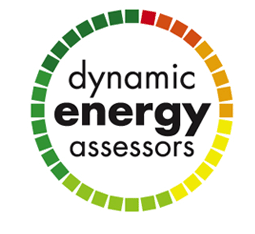Code for Sustainable Homes and Energy Performance of Buildings
Latest entries from the Blog:
- BREEAM Very Good for development in London Borough of Southwark, SE5
- Energy Strategy for a 27 unit change of use in Lewisham
- Energy Strategy Statement for 59 dwellings in Slough
- 50 unit new housing project in Harwich
- BREEAM Very Good and supporting expertise in Ealing, W5
- Carbon Life Cycle Analysis for London Borough of Richmond-upon-Thames
- New building to meet code level 3 in Wandsworth
- Successful planning permission for Orangery in Buckingham
- Planning challenges in Kensington & Chelsea
- Planning permission for glazed extension in Tring
- Local Authority regulations met for new Conservatory in Aylesbury
- Dynamic Energy Assessors provide multiple SAP calculations for client near Redhill
 On Wednesday 22nd February 2012, Communities and Local Government (CLG) published a new quarterly Statistical Release on the Code for Sustainable Homes in England, Wales and Northern Ireland. This release also includes the average energy efficiency (SAP) rating of new homes.
On Wednesday 22nd February 2012, Communities and Local Government (CLG) published a new quarterly Statistical Release on the Code for Sustainable Homes in England, Wales and Northern Ireland. This release also includes the average energy efficiency (SAP) rating of new homes.
Code for Sustainable Homes
Statistics relating to the Code for Sustainable Homes (the Code) show the number of dwellings that have been certified to the standards set out in the Code Technical Guide. Code certificates are issued at two stages, the design stage and post construction stage.
Dwellings are awarded a star rating (one star being the lowest achievable level and six stars being a zero carbon home). If a dwelling does not achieve the mandatory standards and/or does not reach the minimum score for a one star rating, it will receive a certificate with no stars. The assessment and certification of Code homes is undertaken by the 1491 assessors, who are licensed by BRE Global Ltd, Stroma Accreditation and RDL Ltd.
Between April 2007 and December 2011:
- Across England, Wales and Northern Ireland, 77,130 dwellings have received a three star rating at the design stage and 331 dwellings have received a six star rating (i.e. zero carbon home).
- Across England, Wales and Northern Ireland, 45,555 dwellings have received a three star rating at post-construction stage and 128 dwellings have received a six star rating (i.e. zero carbon home).
- A total of 78 per cent of the certificates at design stage and 87 per cent of those at post-construction stage have been awarded at Code level 3 since April 2007 across England, Wales and Northern Ireland.
- Of the 98,865 certificates issued at the design phase, 2,336 were issued in Wales, whilst 1,028 of the 52,486 post-construction certificates were issued in Wales.
Average energy efficiency (SAP) rating of new homes
SAP refers to the Government’s ‘Standard Assessment Procedure’ for assessing the energy performance of dwellings. The SAP rating is expressed on a scale of 1 to 100 – the higher the number, the lower the running costs.
The energy efficiency rating, on a quarterly basis, is volatile due to a number of factors including the mix of dwelling types, the mix of heating systems used in new developments and the location of those developments where there are a small number of new homes being assessed in some of these categories.
The figures shown in this headline for October to December 2011 are provisional and may be revised when next published.
The key points for October to December 2011 are:
- The average energy efficiency, SAP rating, of new homes in Wales was 78.5 compared to 79.2 in England.
- Across England and Wales, the average energy efficiency (SAP rating) of new homes varied from 76.3 in the North West to 81.3 in the West Midlands.
- In Wales the average energy (SAP rating) by dwelling type, ranged from 71.1 for bungalows to 80.3 for maisonettes.
- Overall, England had higher average SAP ratings than Wales for houses and bungalows, but lower average SAP ratings than Wales for flats and maisonettes.
Please note these figures are not classed as National Statistics.



Leave a Reply